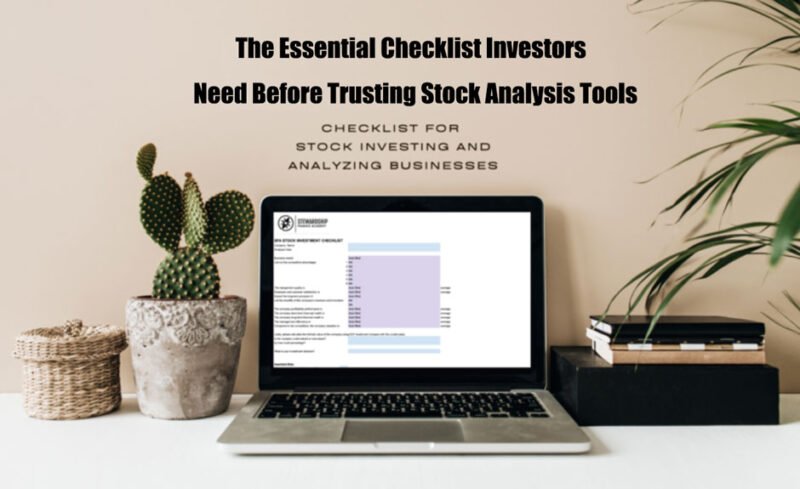Investors often seek clarity when choosing digital resources that claim to simplify trading decisions. A structured checklist helps them avoid unreliable platforms and directs attention toward tools that genuinely provide value. Taking the time to evaluate each aspect ensures confidence before committing to any financial decision.
Start applying this checklist today to strengthen your investment journey. Every investor should carefully examine stock analysis software before making it part of their strategy. The right choice can sharpen insights, highlight opportunities, and reduce the risk of relying on misleading information. A clear process sets a solid foundation for trust.
Credibility of the Analysis Software
The first step on any checklist is confirming credibility. Investors should look for developers or companies with a track record of building reliable financial tools. A transparent background, clear ownership, and a history of compliance with industry standards indicate stability. Public reviews and professional endorsements add another layer of trust. Without these elements, the software may lack the authority required for serious investment decisions. A credible source becomes the base on which all further evaluation rests.
Data Accuracy and Source Reliability
Data is the backbone of every analysis tool. Investors must confirm that the software pulls information from reputable exchanges and trusted financial outlets. Real-time updates and transparent sourcing are essential features. Outdated or questionable data erodes confidence and can lead to flawed strategies. Cross-referencing reported figures with independent market sources is a practical way to confirm accuracy before relying on results. Consistent reliability in data gives investors peace of mind during market shifts.
Key Features That Support Investment Decisions
Features determine how useful the tool becomes in practice. Essential functions include charting options, technical indicators, backtesting capabilities, and performance tracking. Investors should ensure the platform offers these features without unnecessary complexity. Tools that balance advanced functions with clarity create an environment where insights can be applied effectively. Reliable alerts and customizable dashboards further enhance usability, allowing investors to act with precision. A strong feature set increases the long-term value of the platform.
Ease of Use and Accessibility Factors
No tool should create barriers for its users. A well-designed interface helps investors focus on strategy instead of struggling with navigation. Clear menus, intuitive layouts, and responsive performance across devices are essential. Accessibility options, such as adjustable displays and mobile compatibility, extend usability to a broader audience. An investor benefits most when software allows seamless movement between analysis and execution without wasted time. Smooth usability ensures investors stay engaged rather than discouraged.
Security and Privacy Safeguards
Trust depends on the protection of sensitive information. Strong encryption, two-factor authentication, and strict privacy policies form the basis of secure platforms. Investors should check how personal and financial details are stored, and whether independent audits confirm compliance with security standards. A trusted tool must provide confidence that information remains safe at all times. Security is more than a technical detail; it is the foundation of lasting trust. Robust safeguards reassure investors that their focus can remain on markets rather than risks.
The right software makes the difference between a trusted partner and a weak tool. Every investor benefits from a platform that delivers accuracy, reliability, and clear features. Strong security, intuitive design, and credible sources transform a simple program into a dependable ally. When selecting stock analysis software, investors should focus on tools that strengthen decisions rather than complicate them. The right choice builds confidence and supports lasting success in the market.









